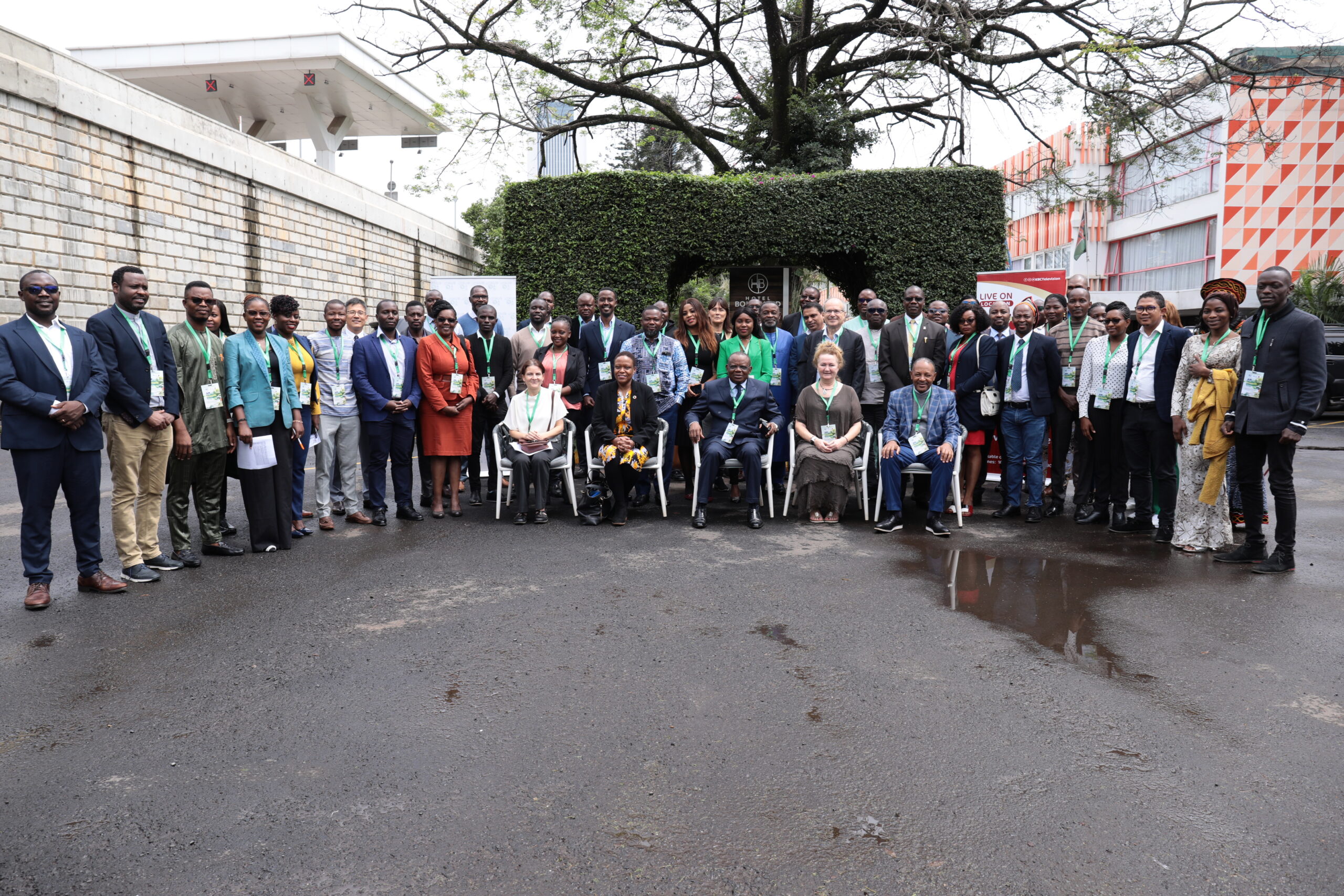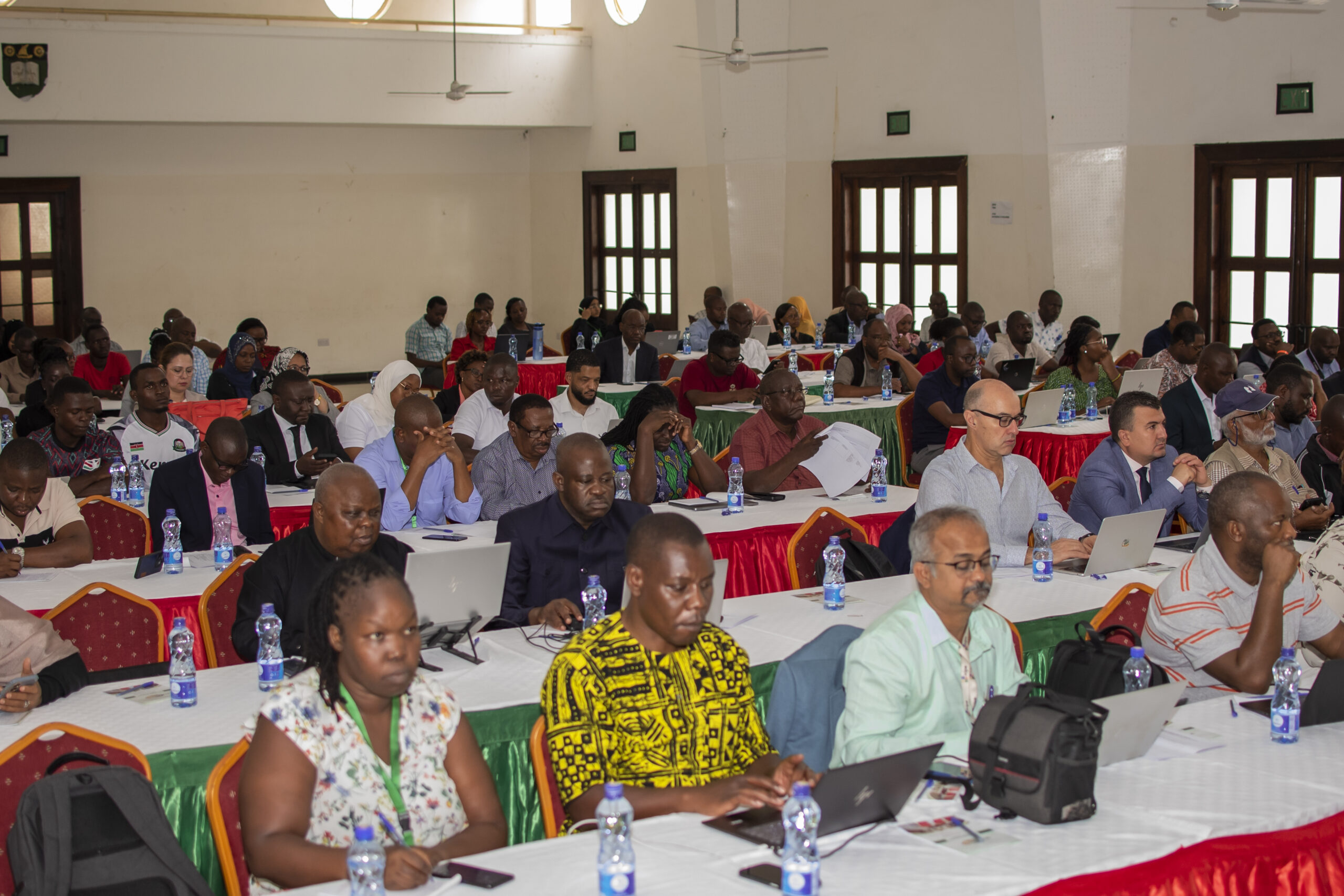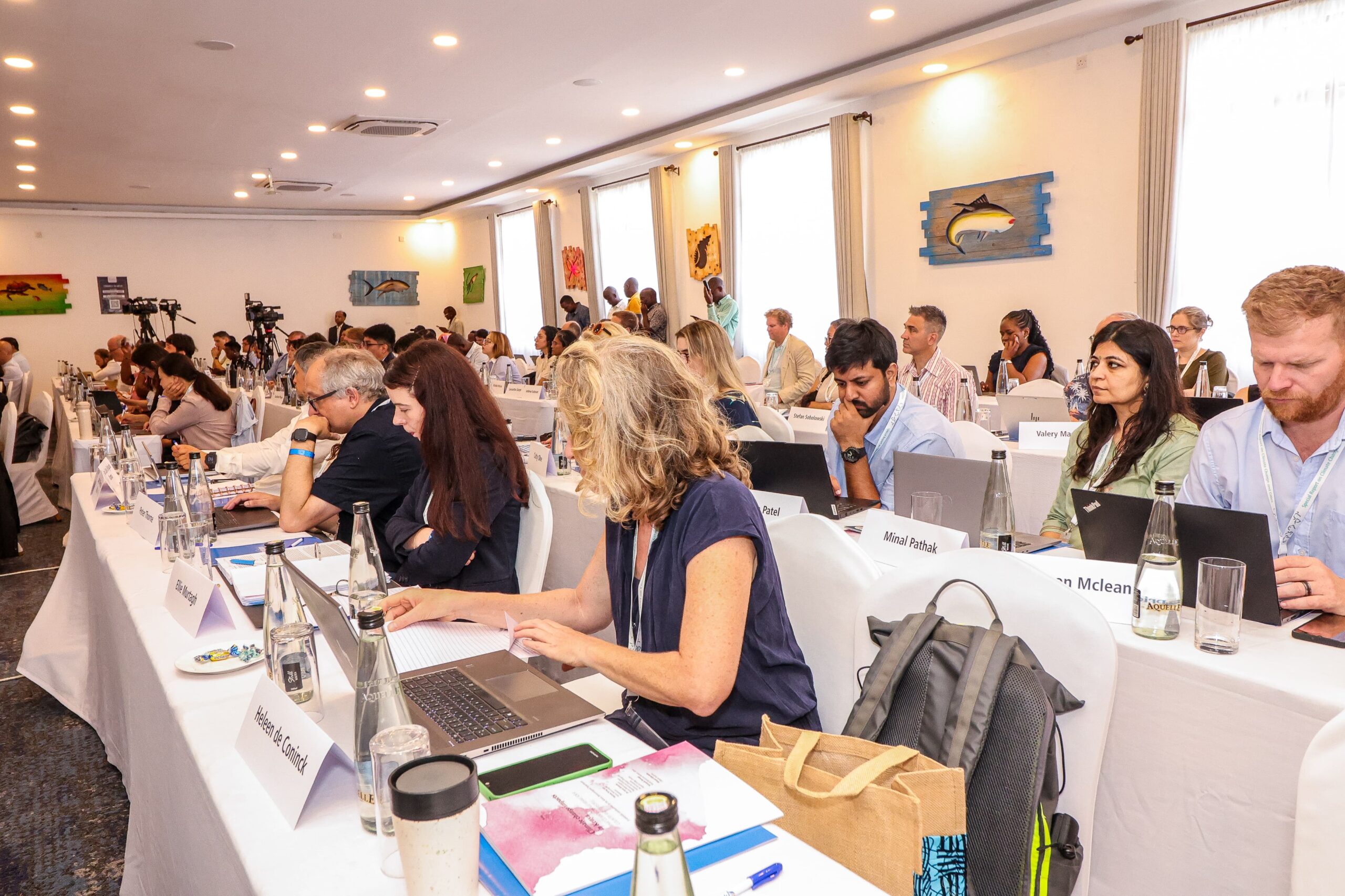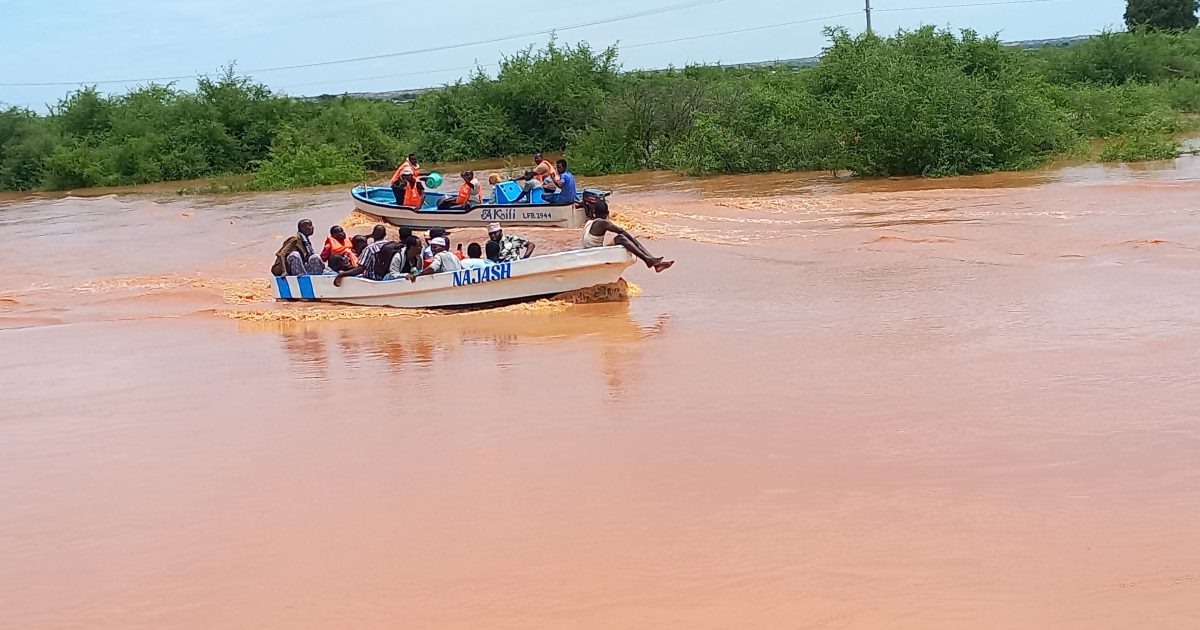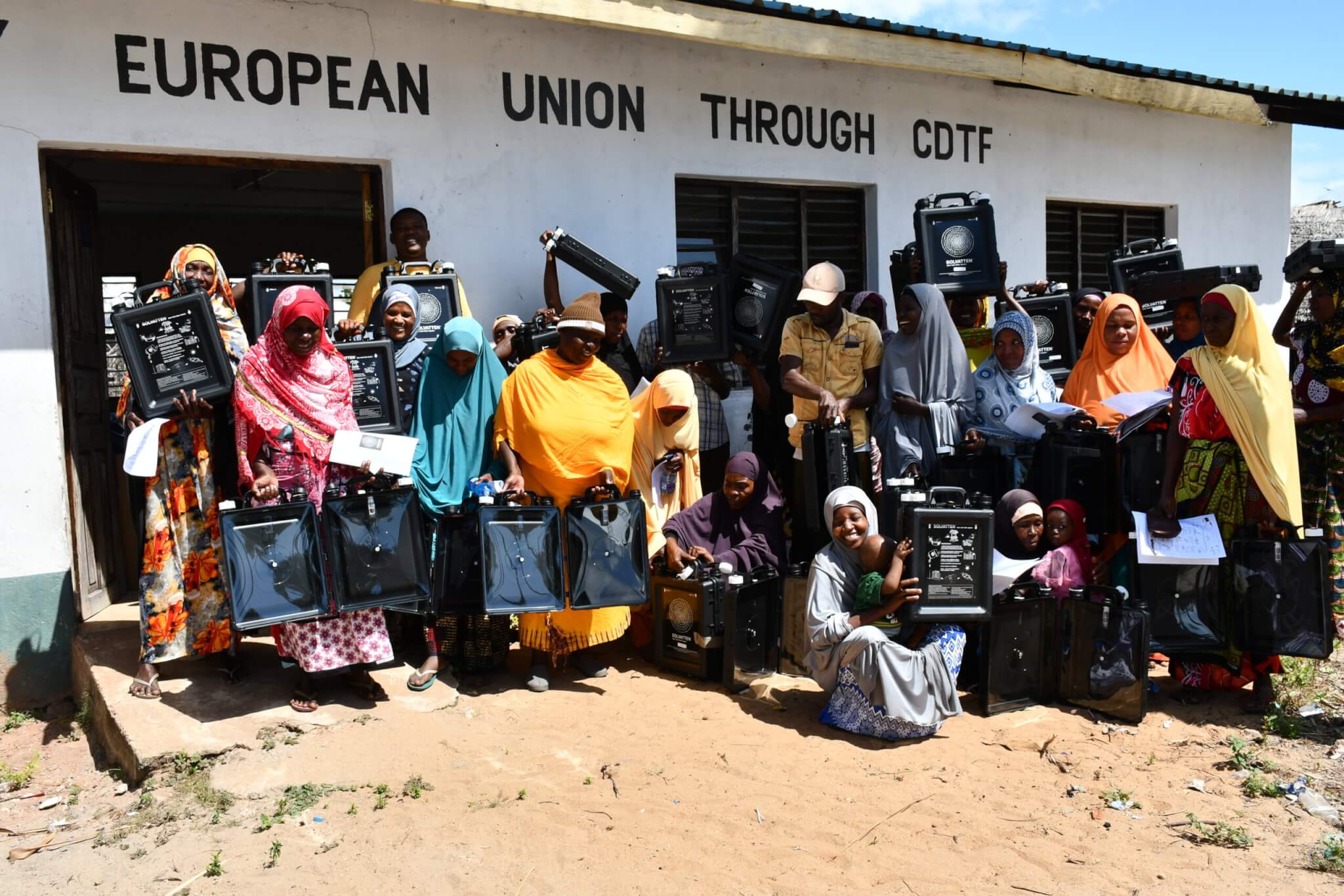Participants at the Summit posing for a group photo. Credit | Duncan Lukoye.
NAIROBI, Kenya – In the wake of devastating floods in Kenya and Cyclone Hidaya’s impact on Tanzania, journalists from across Africa gathered in Nairobi for a summit on climate change and disaster risk reduction.
At the opening ceremony of the 1st Edition of the African Union of Broadcasting (AUB) Media Summit on Climate Change, held in Nairobi on May 6-7, 2024, Gregoire Ndjaka, the Chief Executive Officer of AUB, highlighted the two incidents as prime examples of the climate crisis impacting local communities.
He emphasized the urgency of addressing these climate challenges, noting how they are increasingly disrupting the lives and livelihoods of people across the continent.
Additionally, he highlighted the urgency of the situation, noting that climate change has caused a 34% decline in agricultural productivity growth since 1961 which threatens the livelihoods and economies of African countries.
Ndjaka emphasized the media’s critical role in raising awareness and promoting action.
“We cannot afford to remain silent,” he said. “Extreme weather events are becoming more severe, leading to food insecurity, displacement, and conflict. We must work together to find African-centered solutions to this global crisis.”
“As we deliberate on this salient topic over the next two days, I beseech you all, especially gentlemen of the press, to cast your minds back home to the climate crisis affecting your local communities. Let us make the best of this meeting to propose African-centric solutions to this planetary crisis,” he concluded.

Gregoire Ndjaka, the Chief Executive Officer of AUB addressing the participants. Credit | Duncan Lukoye.
Disaster risk reduction
Disaster risk reduction is aimed at preventing new and reducing existing disaster risk and managing residual risk, all of which contribute to strengthening resilience and therefore to the achievement of sustainable development.
Disaster risk reduction is the policy objective of disaster risk management, and its goals and objectives are defined in disaster risk reduction strategies and plans.
A global, agreed policy of disaster risk reduction is set out in the United Nations endorsed Sendai Framework for Disaster Risk Reduction 2015-2030, adopted in March 2015, whose expected outcome over the next 15 years is: “The substantial reduction of disaster risk and losses in lives, livelihoods and health and in the economic, physical, social, cultural and environmental assets of persons, businesses, communities and countries”.
Early warning systems
An integrated system of hazard monitoring, forecasting and prediction, disaster risk assessment, communication and preparedness activities systems and processes that enables individuals, communities, governments, businesses and others to take timely action to reduce disaster risks in advance of hazardous events.
Effective “end-to-end” and “people-centred” early warning systems may include four interrelated key elements:
- Disaster risk knowledge based on the systematic collection of data and disaster risk assessments;
- Detection, monitoring, analysis and forecasting of the hazards and possible consequences;
- Dissemination and communication, by an official source, of authoritative, timely, accurate and actionable warnings and associated information on likelihood and impact; and
- Preparedness at all levels to respond to the warnings received.

Participants at the venue. Credit | Duncan Lukoye.
The summit also focused on the importance of early warning systems. Speakers like Joshua Ngaina from the World Meteorological Organization (WMO) stressed the need for improved coverage across Africa. Currently, only 60% of the continent is covered by early warning systems.
UN Secretary-General António Guterres’ commitment to ensure everyone on Earth is protected by early warning systems by 2027 was also highlighted.
The summit wasn’t just about technical knowledge. Journalists like Mathew Malata (“Mr. Green”) from Malawi emphasized the importance of journalists understanding the nuances of disaster risk reduction to deliver accurate information.
“In disaster risk reduction stories, we can uncover valuable insights on gender, health, and even digital aspects. What’s crucial is for journalists to have a deep understanding of the topic they’re covering,” he said.

Mathew Malata a journalist from Malawi speaking at the summit. Credit | Duncan Lukoye.
Bissondoyal Avinash from Mauritius pointed out the need for collaboration between media outlets, meteorological departments, and disaster management authorities to ensure timely and accurate information reaches the public.
“If we aim to assist the public by providing accurate information to reduce the impact of disasters, we must set aside our egos and collaborate for the public’s benefit,” he said.
The summit concluded with a call to action for journalists to enhance their understanding of human behavior and promote effective responses to early warnings. Media trainer Emmanuel Wongibe emphasized the importance of delivering disaster risk reduction messages in local languages for better public comprehension.
“We call upon journalists and other media practitioners to build their capacities to understand human behavior and adopt the best approaches to achieve behavior changes in response to early warning information and messages to save lives and livelihoods,” he concluded.
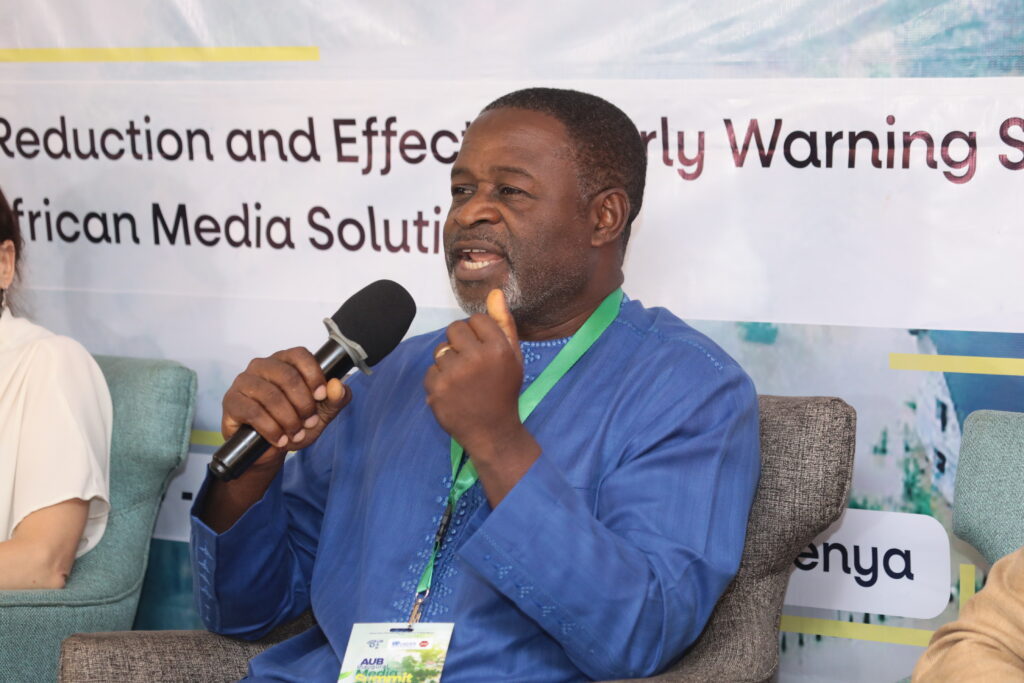
Emmanuel Wongibe, a Media trainer speaking at the summit. Credit | Duncan Lukoye.
The summit was organized by the African Union of Broadcasting (AUB) with support from the United Nations Office for Disaster Risk Reduction (UNDRR), aimed to equip journalists with the knowledge and tools to effectively report on climate emergencies where more than 80 participants attended.

